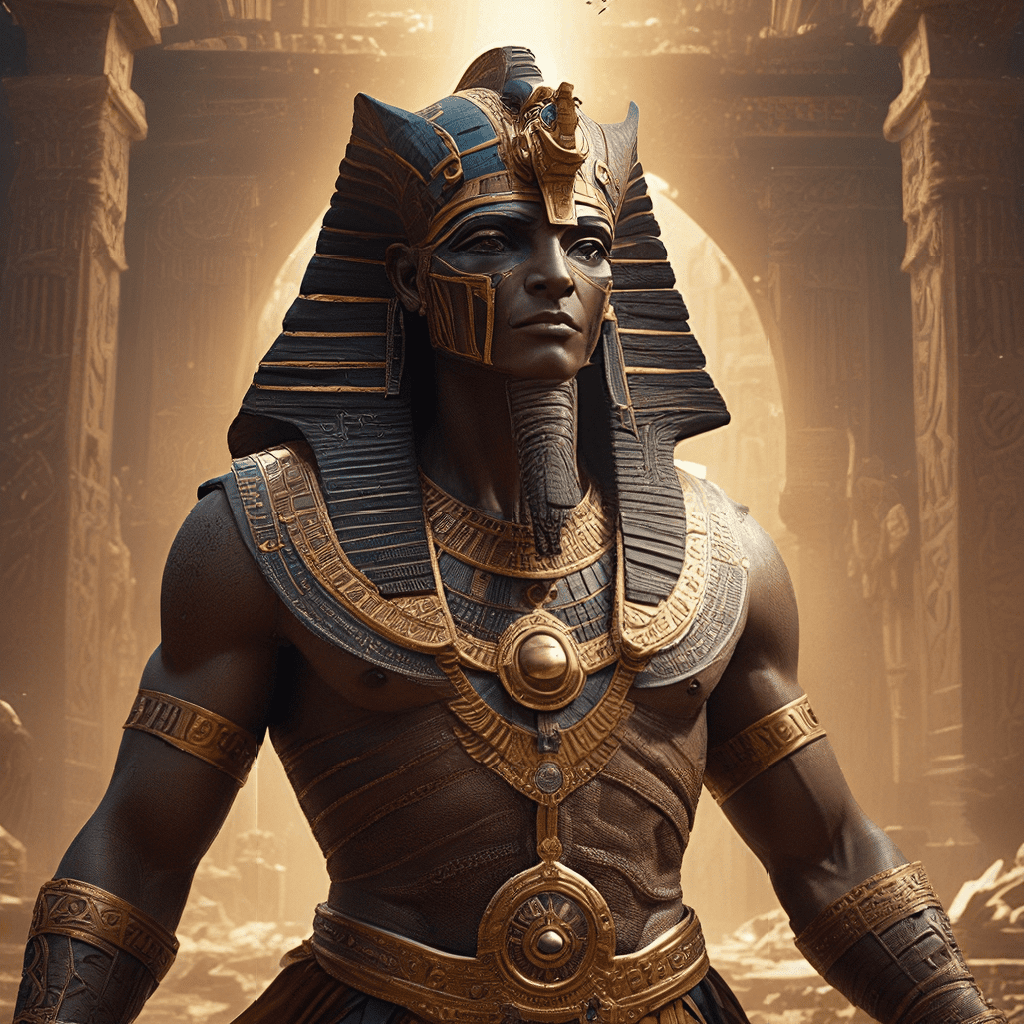1. Introduction: The Divine Son of Osiris and Isis
Horus, a prominent figure in Egyptian mythology, is often mistaken as the god of the underworld. This is a misconception. While he holds a significant position in the afterlife, Horus is actually the god of the sky, kingship, and protection. He is the divine son of Osiris, the god of the underworld, and Isis, the goddess of motherhood and magic.
Horus’s lineage is crucial to understanding his role in Egyptian mythology. Osiris, the king of the gods, was murdered by his jealous brother Set. Isis, with the help of her sister Nephthys, resurrected Osiris, but he could not remain in the land of the living. Horus was born from this union, embodying the hope and strength that would eventually overcome Set’s evil.
Horus, often depicted as a falcon with a human head, represents power, strength, and royalty. His presence signifies protection, justice, and the triumph of good over evil. He is a symbol of the pharaoh’s power and authority as the earthly representation of Horus on Earth.
2. Horus: The Avenger and Protector
Horus’s most famous role is that of the avenger. After his father’s death, he battled Set to avenge Osiris’s murder and reclaim his rightful place as king. This mythological battle, often recounted in ancient Egyptian texts, is a powerful allegory for the cyclical struggle of order and chaos, light and darkness, and good and evil.
The “Eye of Horus,” a prominent symbol associated with Horus, represents his power and protection. This symbol, sometimes depicted as a human eye or a falcon’s eye, is believed to have healing powers and is often depicted in amulets and funerary objects. The Eye of Horus, also known as the Wadjet, is said to ward off evil and protect against harm, reflecting Horus’s role as a protector and guardian.
3. Horus as the Pharaoh’s Patron
The pharaohs of ancient Egypt were considered to be the earthly embodiment of Horus. They were believed to be the direct descendants of the god and held a divine right to rule. This connection between the pharaoh and Horus was evident in the iconography associated with royalty. The pharaoh was often depicted with the “Horus falcon” headdress, symbolizing his divine right and his role as a protector of the people.
The pharaoh was seen as the embodiment of Horus’s strength and power. He was expected to rule justly, protect his people, and maintain order in the land. His connection to Horus granted him legitimacy and divine authority, making him a powerful figure in Egyptian society.
4. The Myth of Horus and Set
The legendary battle between Horus and Set is a central theme in Egyptian mythology. This epic struggle represents the constant cosmic battle between order and chaos. Horus, the god of order and justice, fights against Set, the god of chaos and evil, to restore balance to the universe.
There are various versions of the myth, but the central theme remains the same. Horus and Set engage in a series of trials and battles, testing each other’s strength and cunning. These trials, often involving physical battles, magic, and cleverness, symbolize the ongoing struggle between good and evil. The outcome of this battle determines the fate of the world and the continuity of cosmic order.
5. Horus in the Afterlife
Although Horus is not the god of the underworld, he plays a role in the afterlife journey of the deceased. His association with Osiris, his father, allows him to assist those who pass into the afterlife.
In the Hall of Two Truths, a judgment hall in the underworld, the deceased must declare their innocence and prove their worthiness to enter the afterlife. Horus is believed to help the deceased navigate this process and ensure their successful passage into the afterlife. He is also seen as a protector of the deceased, safeguarding them against the dangers of the underworld.
6. The Rise of Horus’s Cult
The cult of Horus developed over centuries, evolving from a local deity to a prominent figure in Egyptian mythology. His worship was widespread, evident in the numerous temples and festivals dedicated to him across ancient Egypt.
One of the most important temples dedicated to Horus was the temple at Edfu in Upper Egypt. This impressive structure, built during the Ptolemaic and Roman periods, was dedicated to Horus-Behdety, a local form of Horus. The temple complex includes a shrine where the god was worshipped and festivals were celebrated. The Edfu temple is a testament to the enduring popularity of Horus in ancient Egypt.
7. Horus in Art and Literature
Horus is prominently depicted in ancient Egyptian art, including sculptures, paintings, and murals. He is often portrayed as a falcon, sometimes with a human head, symbolizing his strength, power, and authority. The “Horus falcon” headdress, a common symbol of royalty, reflects his connection to the pharaohs.
The “Eye of Horus,” a prominent symbol associated with Horus, is also frequently depicted in ancient Egyptian art. It is found on amulets, sarcophagi, and other funerary objects, representing protection, healing, and the warding off of evil. The Eye of Horus reflects the importance of Horus as a protector and guardian in both the earthly realm and the afterlife.
The myth of Horus and Set is a popular theme in ancient Egyptian literature, often recounted in myths, stories, and legends. These texts provide insights into the beliefs and values of ancient Egyptians and their understanding of the cosmic order. The struggle between Horus and Set represents the ongoing conflict between light and darkness, good and evil, and order and chaos. This battle is a powerful allegory for the eternal struggle that shapes the world and the fate of humanity.




